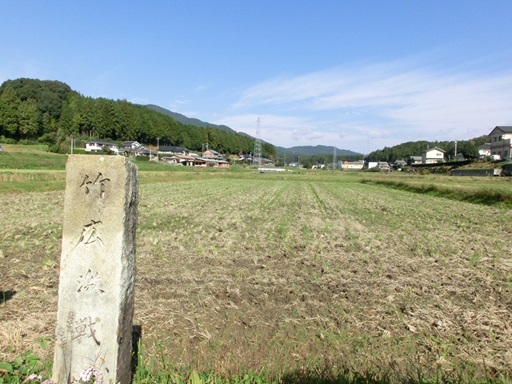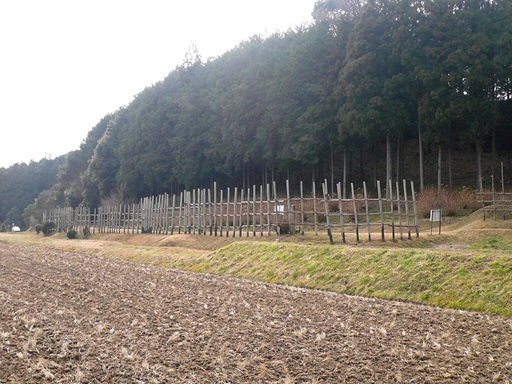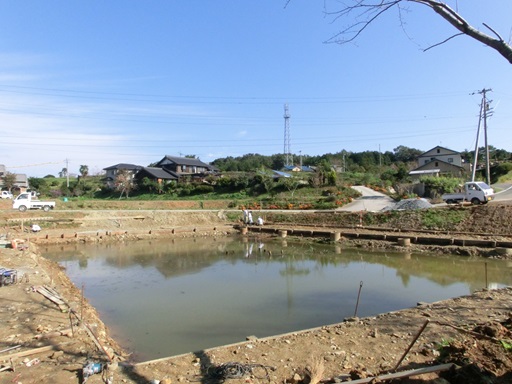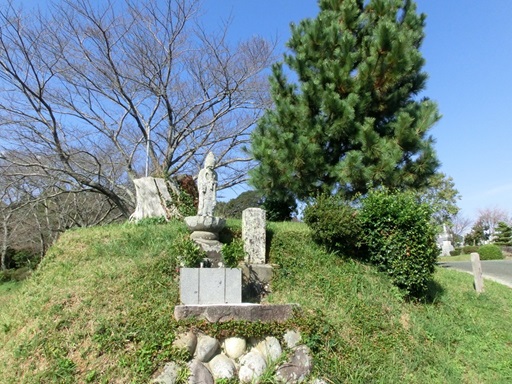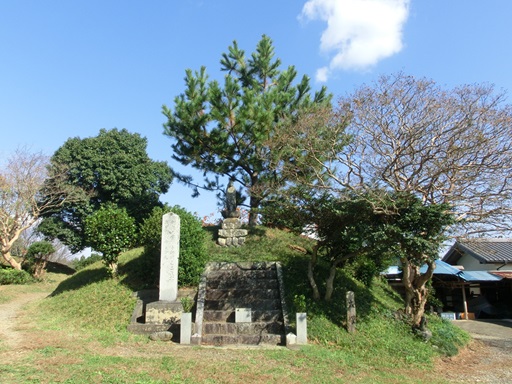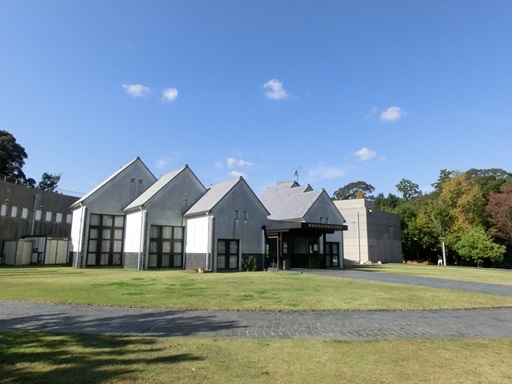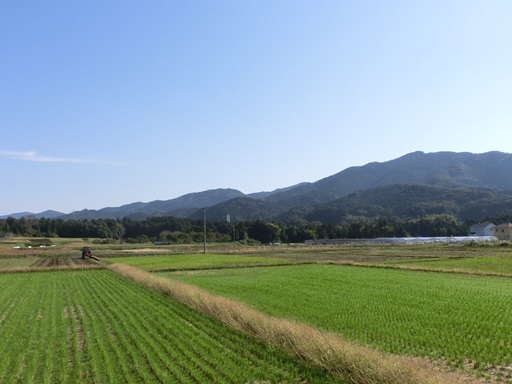|
Shitaragahara Battle Field, Aichi
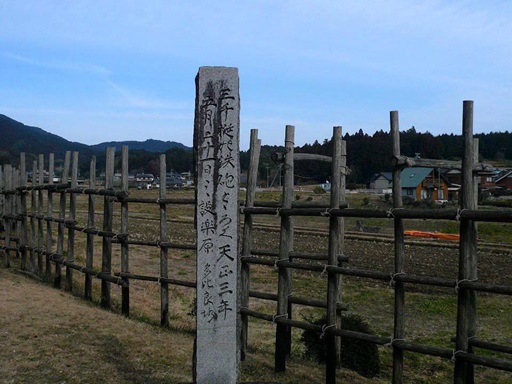
At the end of the sixteenth century, it was the civil war era in Japan. In the present-day Aichi Area, ODA Nobunaga (1534 - 1582) extended his territory from Owari Province, present-day the west part of Aichi Prefecture to Mino Province, present-day the south part of Gifu Prefecture. TOKUGAWA Ieyasu also extended his territory from Miklawa Province, present-day the east part of Aichi Prefecture to Totoumi Province, present-day the west part of Shizuoka Prefecture. ODA Nobunaga and TOKUGAWA Ieyasu(1543 - 1616) formed an alliance. ODA Nobunaga expanded his territory to the west and TOKUGAWA Ieyasu expanded his territory to the east.To further east of Totoumi Province, Suruga Province, the present-day the east part of Shizuoka Prefecture was the territory of TAKADA Shingen (1521 - 1573). To the north of Mikawa Province, the south part of Shinano Province, the present-day Nagano Prefecture, was also the territory of TAKEDA Shingen. TAKADA Shingen tried to expand his territory to the west, to Totoumi and Mikawa Provinces.Please refer the page of "Takeda Shrine" for more detailed description of TAKEDA Shingen. http://handejapan19.html.xdomain.jp/TravelDestinations/Chubu/TakedaShrine_E.html Please refer the page of "Okazaki Castle" for more detailed description of TOKUGAWA Ieyasu. http://handejapan19.html.xdomain.jp/TravelDestinations/Chubu/OkazakiCastle_E.html 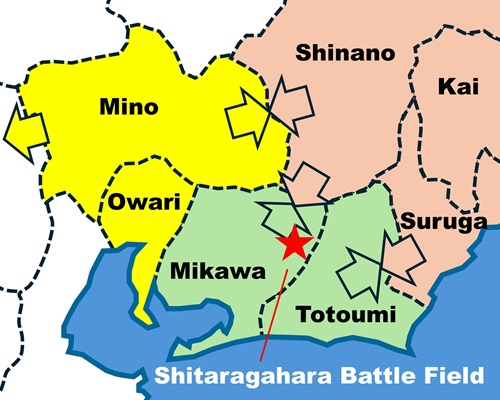
The above map shows the power map in 1572. TAKEDA Shingen suddenly died in 1573, when he attacked into Mikawa Province. His successor TAKEDA Katsuyori(1546 - 1582), the fourth son of TAKEDA Shingen, also kept penetrating into Totoumi and Mikawa Provinces and expanded his territory. In May, 1575, TAKEDA Katsuyori attacked Nagashino Castle, located near Shitaragahara. In order to rescue Nagashino Castle, the alliance of ODA Nobunaga and TOKUGAWA Ieyasu marched to Shitaragahara from Okazaki Castle. The battle broken out at Shitaragahara on May 21st, 1575 as the lunar calendar of those days. Please refer the page of "The ruins of Nagashino Castle" for the detailed description. http://handejapan19.html.xdomain.jp/TravelDestinations/Chubu/Nagashino_E.html Shitaragahara is a hill area along the valley of the Toyokawa River. In the middle of Shitaragahara, the Rengo River, a tributary of the Toyokawa River, flows. The alliance of ODA and TOKUGAWA took up their position on the west side of the Rengo River. The TAKADA army took their position on the other side of the Rengo River. 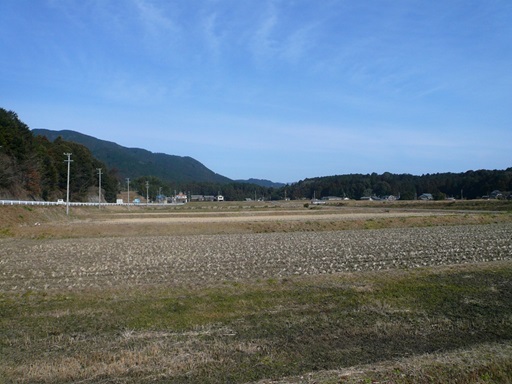
If you approach the site of the "Shitaragahara Battle Field" from the west side, you will see Mt. Chausu-yama approximately 1.5 kilometers west from the Rengo River. ODA Nobunaga set up his headquarters on the top of Mt. Chausu-yama. 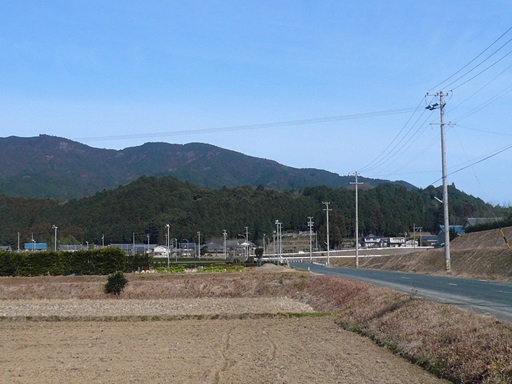
ODA Nobunaga was the leader of the alliance. Considering the location of his headquarters, he was the support corps at the battle. The headquarters of TOKUGAWA Ieyasu was located just 500 meter west of the Rengo River. 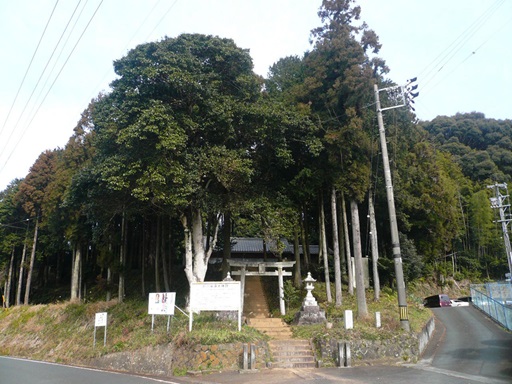
As Shitagarahara and Nagashino Castle were located in the territory of TOKUGAWA Ieyasu, he was the person concerned the battle. TOKUGAWA Ieyasu took up the headquarters near the site of the main battle field. If you will walk over a small hill from the site of the headquarters of TOKUGAWA Ieyasu, you are in the small valley of Rengo River. Rengo River is a small brook. ODA and TOKUGAWA took up their positions on the west side of the Rengo River. TAKEDA Katsuyori positioned up his army on the east side of the Rengo River. ODA - TOIKUGAWA Alliance had an army 30,000 strong. TAKEDA Katsuyori had an army 15,000 strong. The small valley was filled with these troops. |
